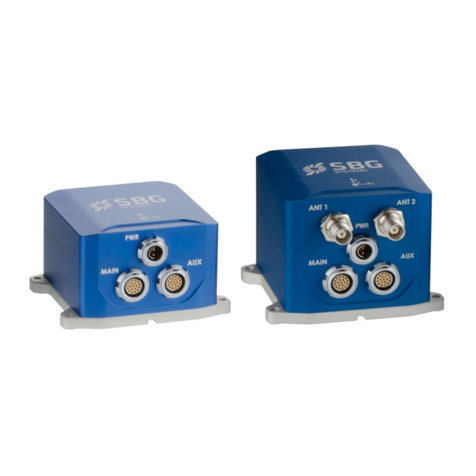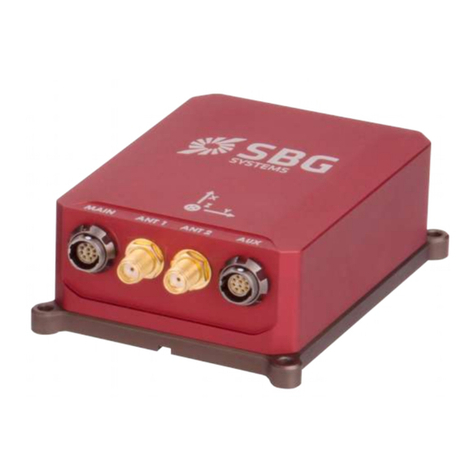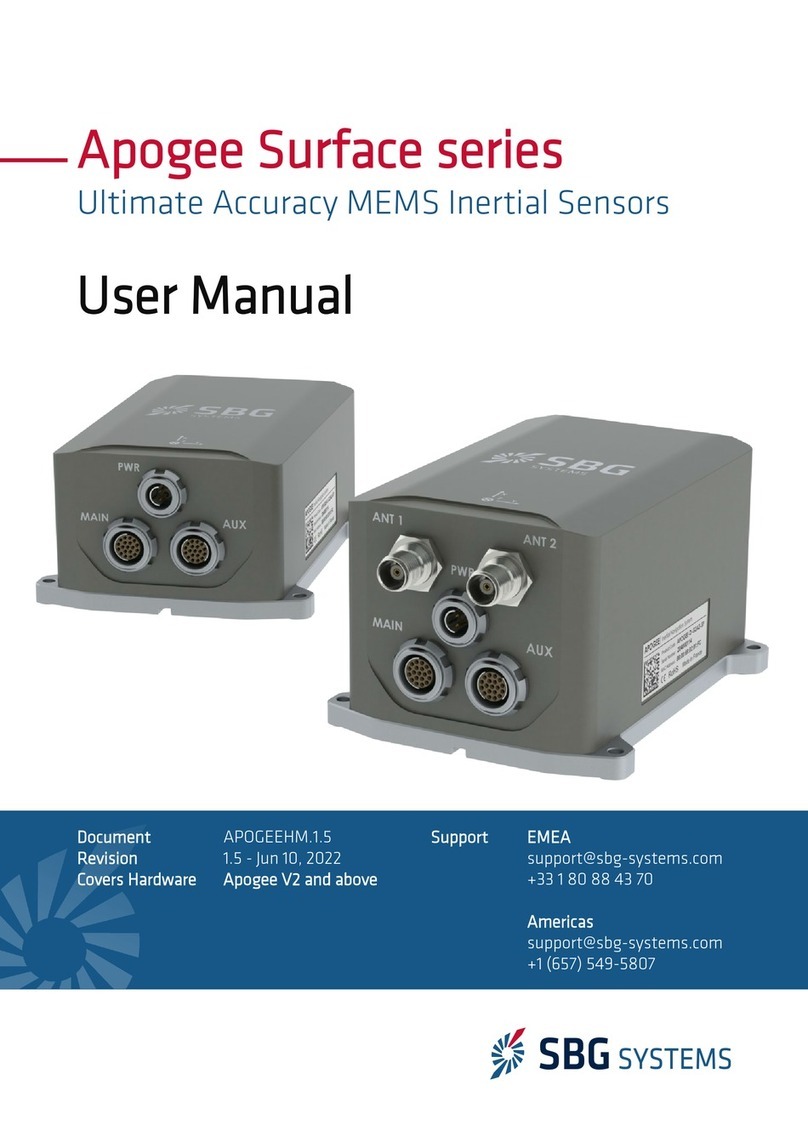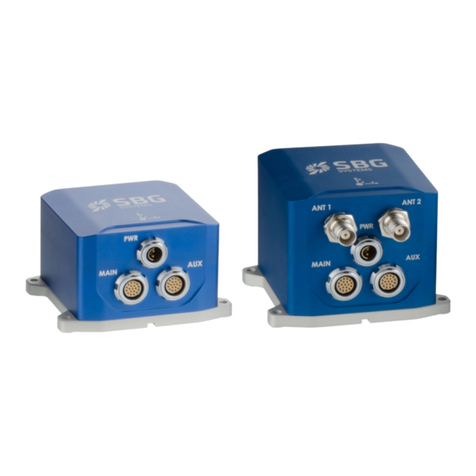Apogee Subsea – Hardware Manual APOGEESUBSEAHM 1 1
2 2 Orientation and Navigation Performance
All specifications are rated to 1-Sigma, over -20°C to +60°C unless otherwise stated
These specifications have been obtained by field tests, using typical mission scenarios and comparison to
reference units using post-processing Outage performance validated by simulation of repeated, pure GNSS
outages, separated by at least 200s of optimal GNSS condition, compared with reference trajectory
Performance parameters may be affected in multi-path and poor GNSS reception environments such as
Urban canyons
The following positioning modes are considered:
●SP: Single Point mode and is the default L1/L2 GNSS fix quality
●RTK: Real Time Kinematics with a typical 1 cm accuracy position
●PP: Post Processed data using Inertial Explorer with at least Precise Point Positioning data
2 2 1 Common specifications
Performance Remarks
Measurement range 360° in all axes, no mounting limitation Solid state sensors
Orientation noise < 0 005° RMS Static conditions
2 2 2 Orientation and Navigation
All specifications are specified in 1sigmavalid with dual antenna aiding for typical marine survey trajectories
Outage
Duration Positioning Mode Position Accuracy (m) Velocity Accuracy (m/s) Attitude Accuracy (°)
Horizontal Vertical Horizontal Vertical Roll / Pitch Heading
0 s
SP 1 0 1 0 0 02 0 01 0 01 0 04 (baseline > 2m)
0 025 (baseline > 4m)
RTK 0 01 0 03 0 01 0 01 0 008
PPK 0 01 0 02 0 01 0 01 0 005 0 02
10 s
SP 1 2 1 1 0 03 0 015 0 01 0 04 (baseline > 2m)
0 025 (baseline > 4m)
RTK 0 17 0 1 0 02 0 015 0 008
PPK 0 03 0 02 0 015 0 01 0 005 0 02
60 s
SP 5 0 2 0 0 15 0 075 0 015 0 04 (baseline > 2m)
0 025 (baseline > 4m)
RTK 4 0 0 75 0 15 0 075 0 012
PPK 0 15 0 05 0 04 0 03 0 008 0 025
8/34


































